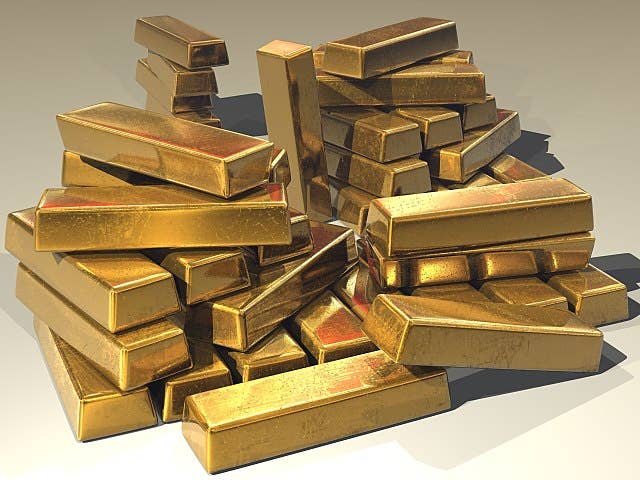Where Are All These Multi-Million Dollar Coins?
Anyone can post any price they want to ask, but that doesn’t mean someone else will be willing to pay for it. Check with an expert before doing something you may regret later.
When I interviewed potential student employees in years past to work at my coin business, one question I liked to ask was, “What is something worth?” Only once did I get the correct business (as opposed to possible sentimental) answer: "What someone else is willing to pay for it.”
If you peruse the internet, you are bound to see headlines touting this or that coin. Many of them are common issues that may be worth thousands or sometimes even millions of dollars because of minor manufacturing defects. In almost every instance, there is little substance to the story.
These kinds of stories get a boost when a real numismatic rarity is discovered. The most recent one is the weekend auction for the US Proof 1975 Roosevelt Dime that is missing the S mintmark. There were 585 million 1975 Roosevelt dimes struck for circulation at the Philadelphia Mint that don’t have a mintmark, but they don’t qualify. PCGS has now certified this second specimen as Superb Gem Proof-67 with a CAC sticker. The other specimen was graded Superb Gem Proof-68 by PCGS and last sold in a major auction in 2019 for $456,000. This newly discovered rarity will almost certainly realize hundreds of thousands of dollars.
People like to dream of discovering hidden treasures. Earlier on the day I’m writing this column, I talked with a young man who had a US 1976-D Bicentennial Quarter with a filled D mintmark, and where the motto looks like it reads “In Cod We Trust” instead of "In God We Trust.” The caller had done a little research and seen some just like it offered on eBay for as much as $10,000.
Anyone can post any price they want to ask. That doesn’t mean that someone else will be willing to pay for it. I advised him to review only completed sales for an indication of value and also to consider how many such pieces were currently offered for sale on the site. At least 70 other examples were offered for sale today on eBay, which is not a sign of a rare coin. Further, very few have sold in recent months, with one on August 17 selling for $2.00 plus $1.15 shipping. Some sold in the $10-25 range. A few went for more. I warned the caller that some of the issues that were reported selling for a high price might be sham purchases by a conspirator of the seller. Such scammers can then try to post another specimen at a similar price to pick off an unknowledgeable collector misled by the fake reported sale. Another indicator of whether this might be a valuable error is to see if it is listed in a reputable reference catalog such as The Redbook (which doesn’t list this error).
Still, today’s caller was smart enough to check with an expert to see if he had found a treasure before he did something he might later regret.
Most of you reading this column are already experienced enough not to fall for the lure of trying to find a minor coin defect that makes it worth a small fortune. One recent headline I saw said you might be able to find a coin in your change that would be worth $47 million. Since there hasn’t been any coin ever that has changed hands at prices anywhere close to that amount, I didn’t bother reading the story attached to this headline.
Over the decades, I have seen thousands of coins with minor striking errors. Many coins have also had superficial damage from circulation or been deliberately altered by someone playing a prank or having fun. Letting those who have such pieces down gently is part of the work of a coin dealer.
Still, never give up hope of finding an exception. Several decades ago, my company handled a US Quarter Eagle struck at the mint in Charlotte, North Carolina. The owner's ancestors had lived in that city back in the 1840s and apparently picked up the coin from the Mint. It came back from the grading service as one of the finest quality surviving Charlotte Mint Quarter Eagles from any year.
Last week’s numismatic trivia question.
Last week, I asked, "Why did “paper money” issued by Colorado private mint Clark, Gruber & Co. during the Civil War change hands for as much as 104% of its stated face value?" Answer: To finance soaring military expenses at the beginning of the Civil War, the US government, for the first time, issued Demand Notes in August 1861. Technically, these were redeemable upon demand for gold. But, when banks ran low on specie to make redemptions, they stopped doing so. This led to people going to designated banks to obtain their gold. The drain on US government gold reserves was so significant that gold redemption was halted in the first few days of 1862. In contrast, the scrip issued by Clark, Gruber & Co. was always redeemable upon demand for their privately minted gold coins. This resulted in Clark, Gruber & Co. “paper money’ being accepted at values as much as 4% higher than their stated face value.
This week’s trivia question
Here is this week’s question. Which world-renowned scientist served as a mintmaster for 28 years? Come back next week for the answer.
Patrick A. Heller was honored as a 2019 FUN Numismatic Ambassador. He also received the American Numismatic Association 2018 Glenn Smedley Memorial Service Award, the 2017 Exemplary Service Award, the 2012 Harry Forman National Dealer of the Year Award, and the 2008 Presidential Award. Over the years, he has also been honored by the Numismatic Literary Guild (including twice in 2020), the Professional Numismatists Guild, the Industry Council for Tangible Assets, and the Michigan State Numismatic Society. He is the communications officer of Liberty Coin Service in Lansing, Mich., and writes “Liberty’s Outlook,” a monthly newsletter on rare coins and precious metals subjects. Past newsletter issues can be viewed at www.libertycoinservice.com. Some of his radio commentaries, "Things You ‘Know’ That Just Aren’t So,” and “Important News You Need To Know,” can be heard at 8:45 a.m. Wednesday and Friday mornings on 1320-AM WILS in Lansing (which streams live and becomes part of the audio archives posted at www.1320wils.com).
You may also like:









